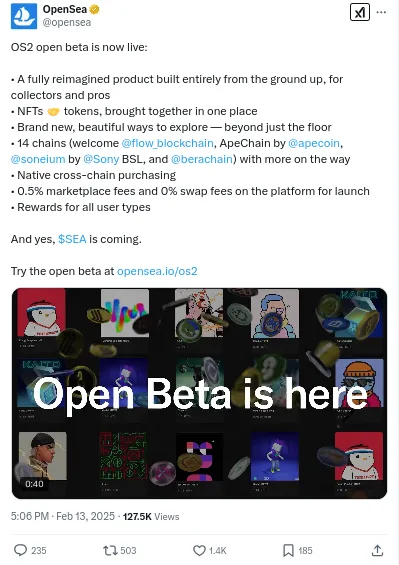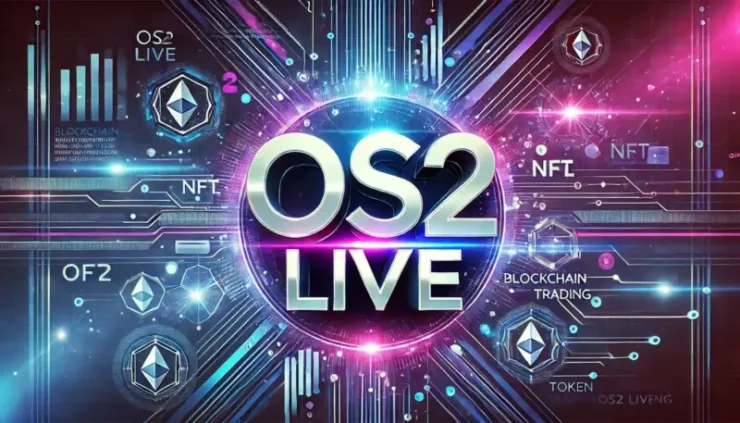OpenSea, the pioneering NFT marketplace, has unveiled OS2, a completely rebuilt platform that extends its reach into token trading.
The new platform introduces an overhauled interface, expanded blockchain compatibility, and a suite of features designed for both casual collectors and advanced traders. Accompanying the launch, the OpenSea Foundation has announced the forthcoming $SEA token, aimed at enhancing user engagement within the NFT ecosystem.
OS2 marks a significant evolution in OpenSea’s offerings, transitioning from a pure NFT marketplace to a broader digital asset trading hub. According to OpenSea Co-founder and CEO Devin Finzer, this development reflects a vision where tokens and NFTs coexist seamlessly on a single platform.
“This represents an expansion of OpenSea from an NFT marketplace to a much broader platform for trading all types of digital assets,” Finzer said. “We think tokens and NFTs belong together in a single, powerful, delightful experience.”
The newly introduced features in OS2 include an improved search and discovery system, a cross-chain purchasing mechanism, and aggregated marketplace listings. Users can now buy NFTs and tokens across multiple blockchains without the need for manual swaps or bridging. Additionally, the updated interface incorporates real-time analytics, rarity indicators, and a redesigned homepage to enhance navigation.
Introducing $SEA: OpenSea’s Native Token

Alongside OS2, the OpenSea Foundation has announced the $SEA token, intended to reward active and historical users of the OpenSea platform. The token’s exact launch date and allocation specifics remain undisclosed, but OpenSea has confirmed that U.S. users will be eligible to participate in the airdrop without undergoing know-your-customer (KYC) verification.
James Hu, General Manager of the OpenSea Foundation, emphasized the role of $SEA in fostering engagement and supporting OpenSea’s ecosystem. “$SEA is designed to encourage greater community engagement and support the next chapter of the NFT ecosystem,” Hu stated.
The launch of $SEA aligns OpenSea with other NFT marketplaces that have introduced their own tokens, such as Blur and Magic Eden. While token rewards have historically generated short-term enthusiasm, OpenSea aims to ensure long-term value by deeply integrating $SEA into the platform’s ecosystem.
A Revitalized Vision for OpenSea
OpenSea’s transformation follows a period of market volatility and increased competition. Once the dominant force in NFT trading, OpenSea has seen its market share shrink, particularly against Blur, which now commands a majority share of Ethereum-based NFT transactions.
“In the bull market, we became far too Web2,” Finzer admitted. “Now we’re really leaning into a small, lean Web3, crypto-native team as we roll out this new product.”
By merging NFTs and token trading into a single platform, OpenSea aims to reassert its leadership in the digital asset space. OS2 is now live at opensea.io/os2, with updates and announcements available through OpenSea’s blog and @openseafdn on X.





